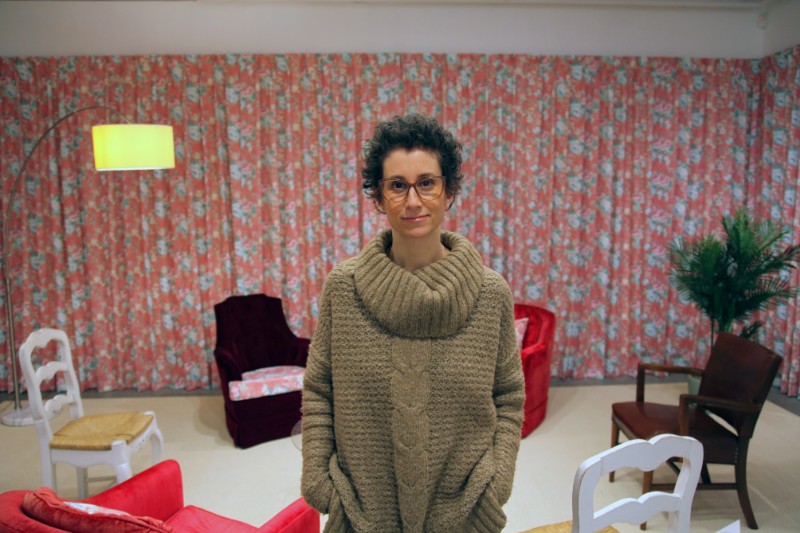It’s not immediately evident how showcases of donated syringes, medication schedules and infant-sized sheepskin slippers tie-in with a living room setting, but the message soon hits home.
The domestic space makes real the humanity of women who have used the mostly clinical contents of the cases during their failed attempts to have a baby.
The set-up of seating and showcases in Galerie de l’UQAM at the Université du Québec à Montréal until March 21 is Heidi Barkun’s master of fine arts exhibition. Inspired by her battle with infertility, it also takes in the struggles of 27 other women.
The title of the installation is the embittered and falsely cheerful, uppercase exhortation LET’S GET YOU PREGNANT!
“The idea to put out a call for participation came from strength in numbers. It also came from the fact that I was looking for community that I couldn’t find at the time I was going through IVF (in vitro fertilization),” Barkun says.
The criteria for participants were that they had to have experienced IVF failure and that they had not become a mother at the time of the interview with the artist.
Barkun herself underwent five rounds of IVF and two inseminations, over a period of four years, with no results. She and her husband went into debt after exhausting the available government funding.
Barkun says she stressed her body with mega doses of hormones, injections, pills, painful procedures and the emotional ups and downs that came with every failure to conceive.
“We just couldn’t do it anymore. We needed our lives back,” she says. “It’s a very common experience and yet few women talk about it. It’s a taboo subject yet the global success rate of IVF is estimated at only 27 per cent, according to ESHRE (the European Society for Human Reproduction and Embryology).”
The objects in the cases are the only witnesses to treatments that, in the end, had no tangible results.
In her artistic practice, Barkun has always focussed on her personal experiences, whether as a sufferer of Crohn’s disease or as a woman unable to conceive a child.
In 2015, for her Unnamed series, she sewed fragments of baby clothes into a textile piece. In 2016, for her Artefacts of a Contemporary Fertility Ritual installation, she assembled her own meds left over from unsuccessful treatments.
LET’S GET YOU PREGNANT! is probably the most communicative of her works on this theme.
“It started with the recorded conversations I had with each woman,” Barkun says. “I then created a virtual conversation between the women by editing them together. This is playing over three sets of speakers in the gallery. Then, hopefully, we can have a larger conversation with visitors.”
Also vital to these conversations is that viewers come to challenge a society that diminishes the value of childless women, a society that demeans “what it means to be a woman if you’re not a mother and the role of such women in society.”
READ: POTTER ALREADY PREPARING FOR SUMMER SEASON
Barkun will host a discussion tea on March 21 in the living room section of her installation modelled on “a consciousness-raising group.” Visitors will make themselves comfortable on armchairs belonging to her late grandmother.
The living room niche is made even more intimate by flowered drapery provided by her supportive parents, Ted and Sheila Barkun, and her brother Stan, who tailored them at their family home furnishings business.
The homey seating area throws into even sharper contrast the sterility of the showcase displays of dehumanizing treatments.
Farther afield, Barkun has shown her art at conferences and congresses in Vienna and New York, where she discussed the roots of its angst. But it’s not all gloom.
“Yes, the artwork talks about failure and mourning but it also talks about resilience and liberation, and about new ways of happiness,” Barkun says. “A lot of the women are saying they’ve found themselves again.”
